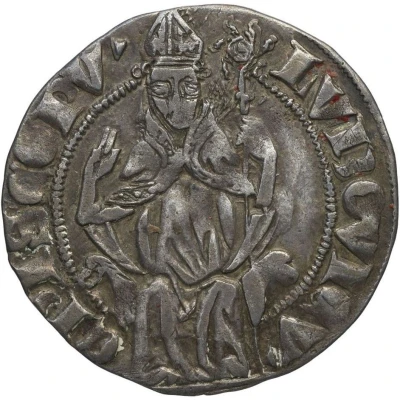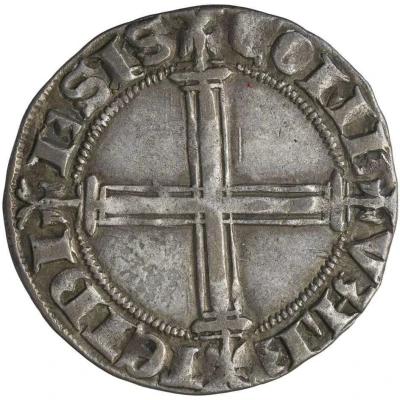


© Bibliothèque nationale de France / Gallica
Groschen - Louis of Villars ND
| Silver | 3.12 g | - |
| Issuer | Bishoprics of Valence and Die (French States) |
|---|---|
| Bishop | Louis of Villars (1354-1377) |
| Type | Standard circulation coin |
| Years | 1363-1376 |
| Value | 1 Groschen (12) |
| Currency | Denier |
| Composition | Silver |
| Weight | 3.12 g |
| Shape | Round (irregular) |
| Technique | Hammered |
| Orientation | Variable alignment ↺ |
| Demonetized | Yes |
| Updated | 2024-10-04 |
| Numista | N#387725 |
|---|---|
| Rarity index | 100% |
Reverse
Large cross with double-headed eagles at the extremities.
Script: Latin (uncial)
Lettering: COME VALET ET DIESIS
Lettering (regular font): COME VALET ET DIESIS
Translation: Count of Valence and Die.
Comment
Only in 1363 Louis takes the official title of Bishop after his nomination in 1354.
Interesting fact
One interesting fact about the Standard circulation coin Groschen - Louis of Villars ND (1363-1376) from Bishoprics of Valence and Die (French States) made of Silver weighing 3.12 g is that it was minted during a time of great economic and political change in Europe. The coin was issued during the reign of Louis of Villars, who was the Bishop of Valence and Die from 1363 to 1376. During this period, the Bishoprics of Valence and Die were part of the French States, and the coin was used as a standard form of currency throughout the region. The fact that the coin was made of silver is also significant, as silver was a valuable and widely used metal in the medieval period. The use of silver in coins was a symbol of wealth and power, and the fact that this coin was made of silver suggests that it was a high-value coin that was used for large transactions. Overall, the Standard circulation coin Groschen - Louis of Villars ND (1363-1376) from Bishoprics of Valence and Die (French States) made of Silver weighing 3.12 g is a fascinating piece of history that provides insight into the economic and political conditions of medieval Europe.